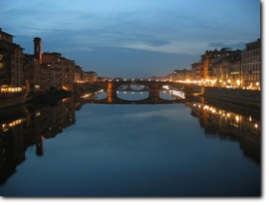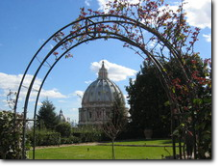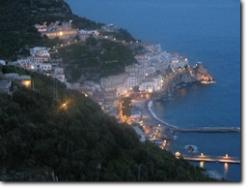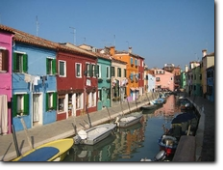Latium Region | Region of Lazio | The Region of Rome | Rome Travels - Rome Travels | Home | Rome Guide | Rome Tours | Rome Travel | Religious Holidays | Italy Pilgrimages | Italy Shore Excursions




Main menu:
Latium Region | Region of Lazio | The Region of Rome | Rome Travels
Everyone knows or heard of Rome Italy, the Roman Empire, Julis Caesar, the Pope, Vatican or the works of Arts of Michelangelo in the Sistine Chapel. Not many people know that Italy is made out of twenty regions and that the Italian Region of Rome is Lazio. The Ancient Romans came second to many local people who pre-existed to them in today's region. From the North to the South and East of Rome, in the four more important municipalities of the Lazio Region other than Rome (Viterbo, Rieti, Latina and Frosinone) there are hundreds of surprises.
From the Sea to the Mountains, from the Spas to the Archaeological Sites, towns and places rich of faith, fun, nature and art. And, last, second to none, tastful food & wines, being the expression of the typical Italian reality of the "Campanilism" (from the Italian "Campanile" = Belltower in English, i.e. the symbol of a city) where each town is better than any other one in the neighborhood ... it's the typical Italian friendly rivarly.

Regione Lazio - Lazio Region
Official Website
Essential Travel Guide
Free Download
PDF, 318 kb
Here
ORIGIN:
Latium - Lazio Region: it's the Ist region of Italy, comprised between the river Tiber and the river Liris, the Tyrrhenian sea and the country of the Sabins, Aequi, Marsi, etc. It includes the cradle of the Roman civilization, i.e., the Latium vetus, inhabited by the "Latini". Its area constituted a part of the much larger modern Italian Region of Lazio, also called Latium in Latin, and also in modern English.
The ancient language of the region was to become the basis of Latin. The name Latium is most likely derived from the Latin word "latus", meaning "wide", expressing the idea of "flat land" (in contrast to the local Sabine high country) and it was referred to the South area of Rome until the border with Campania Region (Gaeta-Formia today).
HISTORY: From the 9th Cent. B.C to the Fall of the Roman Empire
Settled by agricultural populations since the early Bronze Age and known by the Ancient Greeks, the Lazio Region was populated by the Indo-European language speakers, significantly the Etruscans. The Etruscans, from their home region of Etruria (modern day Tuscany and Noth part of Latium Region) exerted a strong cultural and political influence on Latium from about the 9th century B.C. onward.
One of the few and earliest recorded non-Etruscan settlements in Latium was the city of Alba Longa located in the present-day with the town of Castelgandolfo in the area of the Roman Castles. According to Livy, it was here that the Latin League was founded, a coalition of city-states intended as a defense against Etruscan expansion. The city-state of Rome emerged as the dominant political and military power in the region, following Rome's destruction of Alba Longa in the middle of the 7th century B.C.
During the Caesar Augustus' administrative system, Latium - together with the present region of Campania- was the first Italian region.
After the Gothic war (535-553) and the Byzantine conquest, this region regained its freedom, because the "Roman Duchy" became property of the Eastern Emperor. However, the long wars against the Longobards impaired the region which was seized by the Roman Bishop who already had several properties in those territories.
LATIUM REGION : from the Middle Ages to the Italian unification (1870)
The strengthening of the ecclesiastical aristocracy led to continuous power struggles between Lords and the Roman Bishop (i.e: the Pope) until the half of the XVIth century.
Popes tried to strengthen their own territorial power, trying to assert their authority on the provincial administrations through the Church's representatives, in order to tear down the power of the local aristocratic families.
During the Avignon period (1309-1376, the so called "Avignon Captivity") the feudal Lords' power increased thanks to the absence of the Pope from Rome: significantly the Orsini and the Colonna Families who dominated the course of the history in the Latium Region for many years.
From the middle of the XVIth cent. the Pontifical power's definitive victory unified Latium's history with that of the Vatican State becaming the provincial administrations of St. Peter's Patrimony, with a governor in Viterbo and one in Frosinone. Latium became part of the Pontifical State (1815, Congres of Vienna).
In 1870 when the French troops were sent out of Rome and General Garibaldi entered the Pontifical territory, occupying Rome on the 20th of September, Latium definitely joined the rest of the new born Kingdom of Italy having Rome as the Capital of Italy.
Religious Italy
Religious Rome
Pilgrimage to Rome
The Etruscan Travels
Sutri
Contact lenses online - Find the contacts you need at a discount price from Just Lenses. Contact lenses for less right to your door.
The REGION of LATIUM Today: the reasons of coming to the Lazio Region, an immense "Region of Rome" made out of hundreds of realities.
Lazio is the home region of the Italian capital, Rome. Actually with its heritage of culture, history and nature, Lazio satisfies all tourist’s needs, turning a vacation into an unforgettable event. With the exception of Rome, the region's economy has been unchanged in the last decades. Agriculture, crafts, animal husbandry and fishery are the main traditional sources of income.
Of all the Italian Regions, the Lazio Region has the architectural heritage of inestimable value where each historical period left its indelible mark due to the vicinity of Rome.
Two millenniums of history made out of Faith, spiritual places, silent abbeys, sanctuaries. But also the Roman ruins spread out in the four diferent main cities and their surrounding areas.
Few people think of the landscapes of the Regione Lazio: the region is one of the most varied ones we have: mountains, volcanic lakes, golden sands full of the Mediterranean flavours, natural parks, and, of course, different agricoltures. This one is characterized by the cultivation of wine grapes (being a typical of the Italian wine region), fruit, vegetables and olives. This gives us the chance to taste some unique wines with fine dishes seasoned with an olive oil in the North part of Latium (Sabina and Tuscia).
The Region of Lazio offers several great accommodation facilities as well as "too" many sites of historical and artistic interest, taking up a good part of the National and international tourist activity.
Tourists can spend their holidays sunbathing in a traditional seaside facility (Terracina) or strolling around in less famous localities, important for their history, monuments and enological and gastronomic itineraries.
Among the little gems in Latium Region are worth of mention the towns of Alatri, Amatrice, Anagni, Bolsena, Cassino, Greccio, Sutri, Tarquinia, Tuscania.
Lazio, the Region of Rome is waiting for you!
